2014 Chevrolet Spark EV Review

Unless you live in Oregon or California, there isn’t much point in reading this review –at least for now. These are the only two states Chevrolet will be selling the all-electric 2014 Spark EV in, with no definite plans on expansion at this time. The reasons behind this decision are multiple, but the main point has to do with keeping the program contained as there is a limited inventory of electric Sparks and it’s easier to train and certify a smaller group of dealers on the electric components. If the Spark EV is a success, expect its sales reach to expand.
FAST FACTS
| 1. Electric engine creates 140 hp and roughly 400 lb-ft of torque. |
| 2. Range is an estimated at 82 miles on a full charge. |
| 3. The Spark EV is rated at 119 MPGe. |
| 4. Priced at $27,495, the Spark EV will run $19,995 after federal tax incentives. |
Chevrolet is in the middle of a bit of a reinvention and resurgence. This year, 13 new or significantly redesigned Chevrolets will hit the market. A lot of these new vehicles, like the Cruze diesel, Sonic and Spark, are built on global architecture. It may surprise some to learn that 60% of all Chevrolet vehicle sales occur outside the USA, and half of all GM cars sold worldwide are Chevys.
SMALL CARS, BIG HITS
A huge focus for Chevrolet these days is the small car market. According to the manufacturer, Chevrolet is ranked second in new car sales for people under the age of 25 in the US. The Spark EV however is a little bit different, unlike the gasoline version it isn’t designed for a youth buying their first car, but rather a couple looking for a second car; a commuter car.
The exterior of the Spark EV does not look drastically different than a regular Spark aside from a shiny, closed-up front grill. Although dozens of aerodynamic tweaks have been made to the exterior, most are not noticeable to the untrained eye. That was the plan from the start for Chevrolet; create an EV version of the Spark that gives up nothing to the conventional internal combustion (ICE) version of the city car. The battery pack needed to be packaged completely under the car with no passenger or cargo space sacrificed; the inside dimensions needed to remain similar.
THE SAME INSIDE – ALMOST
The success is mixed. Passenger space is unchanged with rear seat occupants still having 35.2-inches of legroom, but cargo capacity decreases 1.8 cu-ft with the rear seats up and 7.8 cu-ft with them folded. The rest of the interior is fairly similar to gas-powered Spark except for a few extra EV related buttons here and there, and a different driver information cluster.
The Spark’s usual motorcycle style set-up has been ditched in favor of one that closely resembles that of the Chevrolet Volt. It includes the next generation confidence gauge that relates to a driver the maximum and minimum vehicle range as well as estimated range, all based on the driving style over the past 50 miles.
Only two trim levels of the Spark EV will be offered, 1LT and 2LT, with the only differences being an upgrade from cloth seats to leatherette and the addition of a leatherette covered steering wheel.
Chevrolet’s MyLink infotainment is standard and features all the vehicle charging stations in OR and CA through the BringGo navigation app. As with all Chevrolet Sparks, the EV is full of hard plastic interior pieces, and does not have a telescopic steering wheel which makes it difficult for some to find a comfortable seating position. But there is a good amount of headroom, decent sightlines and fairly comfortable seating for four.
THANKS VOLT! SINCERELY, SPARK EV
The Spark EV has a lot to owe the Volt for its existence. The charging system is similar to that of the Volt, with a few modifications. The battery also uses technology learned from Volt program, and in the Spark EV is a 21 kWh lithium-ion comprised of 336 cells. The battery is located under the cargo floor and rear seats and improves the Spark EV’s weight distribution to an almost perfect 50/50 front to rear. This battery will return to a full charge from empty in 17 hours with a regular 120V household outlet, 7 hours with a stage two 240V charger, or 80% full in just 20 minutes with a stage three fast charger. However, the stage three DC chargers will not be available until late Q4 2013 and should cost an extra $750. As with most electric vehicles, the Spark EV will come with an eight year, 100,000 mile warranty on the battery.
TORQUE MONSTER
But it’s the electric motor that is really impressive. Developing 140 hp and a whopping 400 lb-ft of torque, the Spark EV has serious power under the hood. Those familiar with conventional electric motors will be quick to point to out that although the engine makes 400 lb-ft at 0 rpm, the torque curve drops off quickly. This is not the case with the Spark EV. The engine control unit keeps the majority of torque on hand until the upper most rev range.
So, a city car with more torque than a Ford Mustang GT is going to just obliterate the front tires into smoke, right? Well, not exactly, thanks to engine management and gearing. Electric vehicles do not use conventional gearboxes like a gasoline powered car does. Instead, they use a single gear ratio to send power to the front wheels. Think of it like your road car only using 6th gear at all times.
To save on development costs, the Spark EV uses the same six-speed automatic gearbox housing, but with only one 3.17 final drive ration gear inside. That 3.17 may seem low, but since there’s an abundance of torque, Chevrolet used this low gear ratio to make the EV even more efficient.
Despite this uber tall gearing, power is always on tap. From a stop, up a steep hill or on the freeway, stab the throttle and the Spark EV thrusts away with authority; pushing you back in our seat with unexpected determination. Chevrolet claims a 0-60 mph time of roughly 7.6 seconds, which blows most electric vehicles away. This is also a lot faster than the gas-powered Spark and Chevrolet has had to upgrade the half shafts to handle all the extra power.
82 MILES OF RANGE
Chevrolet claims this vehicle will achieve 82 miles of range on a single charge. After a day of driving, the that seemed entirely feasible without any special hypermiling required. And that is important as Chevrolet claims this Spark is not just an EV, but also fun to drive. Chevy doesn’t want drivers to have to baby the throttle on this electric car; drivers should have fun with it.
And the fun is not just because it has 400 lb-ft of torque either. The chassis is well sorted – for a city car. Along with that 50/50 weight distribution, the enter of gravity has been lowered over 60 mm, though the curb weight has climbed dramatically from 2,368 to 2,967 lbs. While a drawback in certain respects, the added pounds down low make it feel planted and less like a tiny city car. Ride comfort is also improved through revised suspension tuning.
Unusual for a front-wheel drive vehicle, the rear tires, at 195/55R15 are actually wider than the fronts at 185/55R15.
Compared to the Smart fortwo or Scion iQ, the Spark is the most entertaining vehicle of the bunch; but that could be like saying it is more fun watching orange paint dry than beige paint.
THE VERDICT
Discuss this story at SparkTalk.com
The Spark EV will roll off the same assembly line in Korea as all other Spark models. Priced at $27,495, the it will run $19,995 after federal tax incentives, and drop a further $2,500 in California thanks to state incentives. After eAssist, it looked like GM would never get this hybrid EV thing right. But then came the terrific Volt and now comes the Spark EV; quite possibly the best all electric small car on the market.
LOVE IT
- Engine power
- Ride comfort
- Decent handling
- Interior space
LEAVE IT
- Limited range
- Some space sacrificed
- No telescopic steering wheel

A 20+ year industry veteran, Mike rejoins the AutoGuide team as the Managing Editor. He started his career at a young age working at dealerships, car rentals, and used car advertisers. He then found his true passion, automotive writing. After contributing to multiple websites for several years, he spent the next six years working at the head office of an automotive OEM, before returning back to the field he loves. He is a member of the Automobile Journalists Association of Canada (AJAC), and Midwest Automotive Media Association (MAMA). He's the recipient of a feature writing of the year award and multiple video of the year awards.
More by Mike Schlee














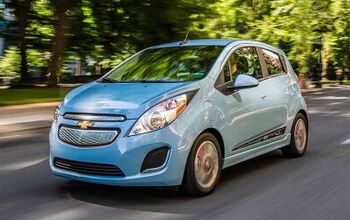

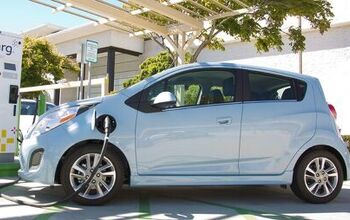

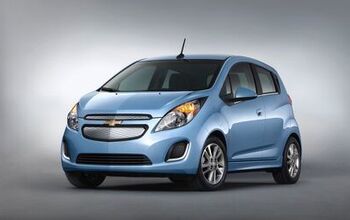

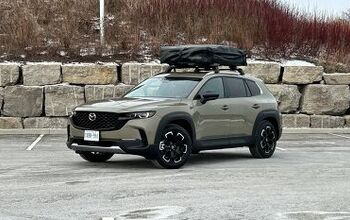

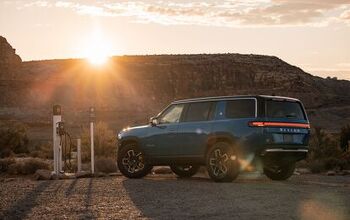



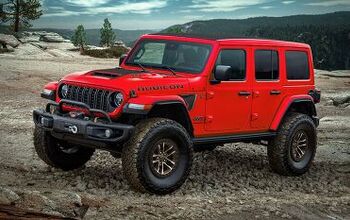




Comments
Join the conversation